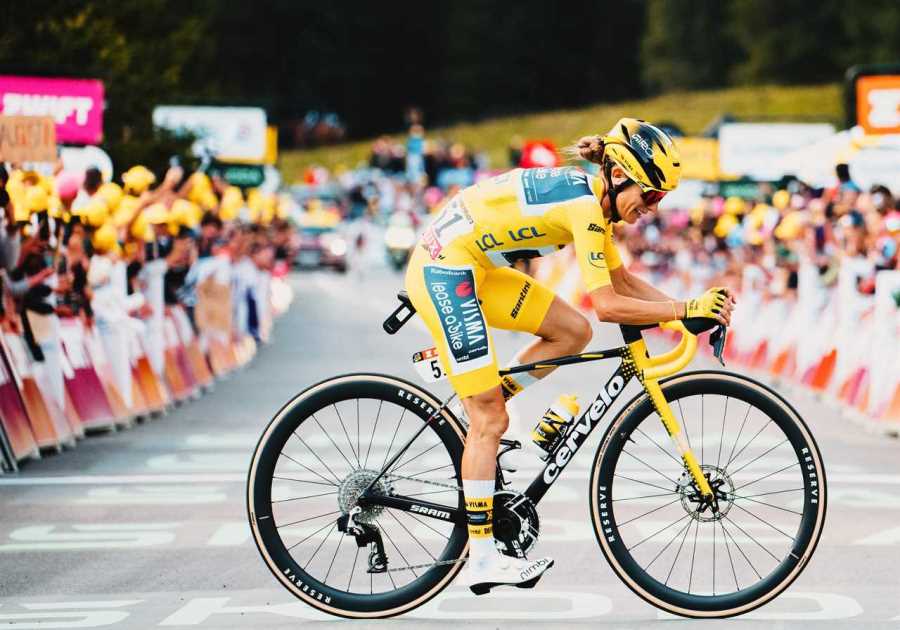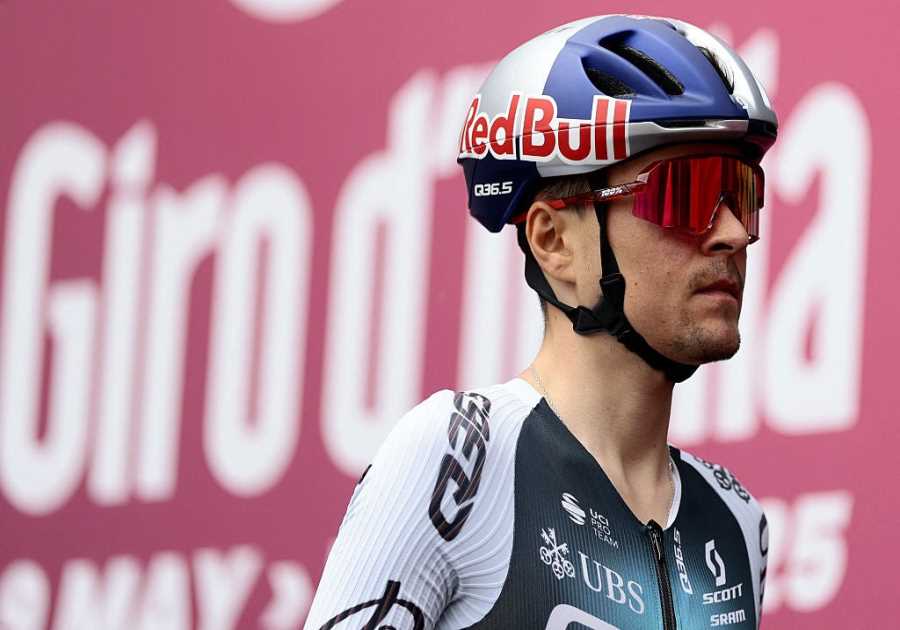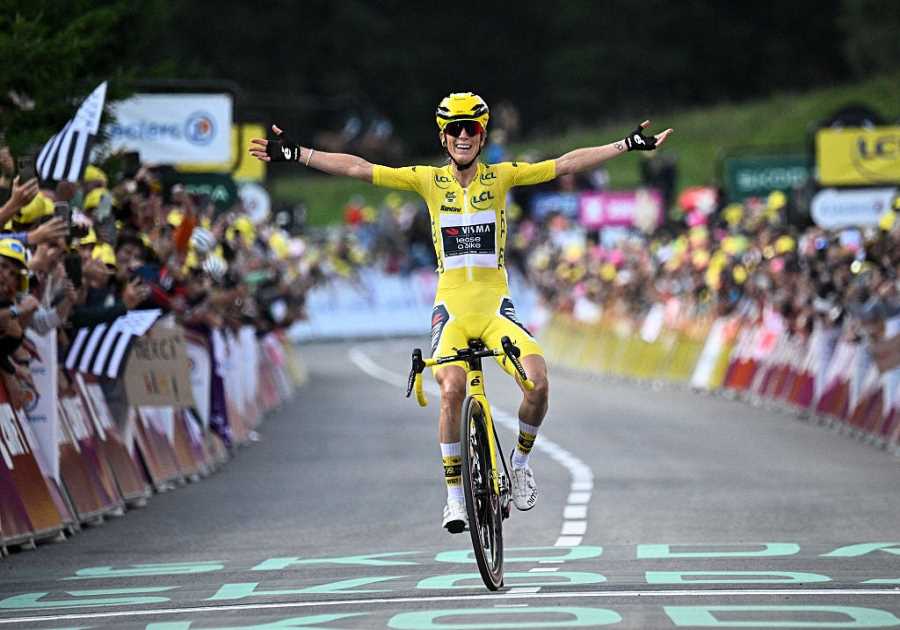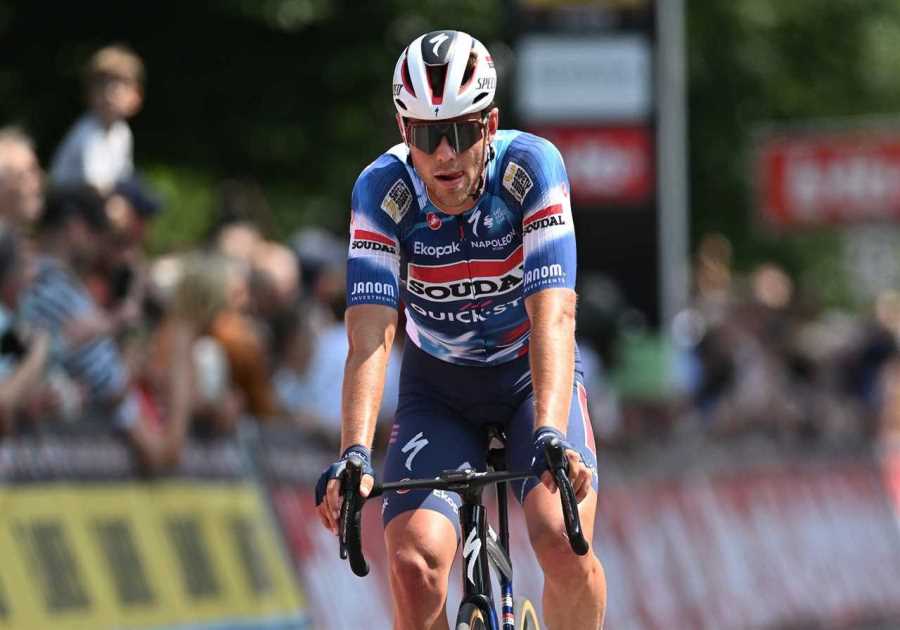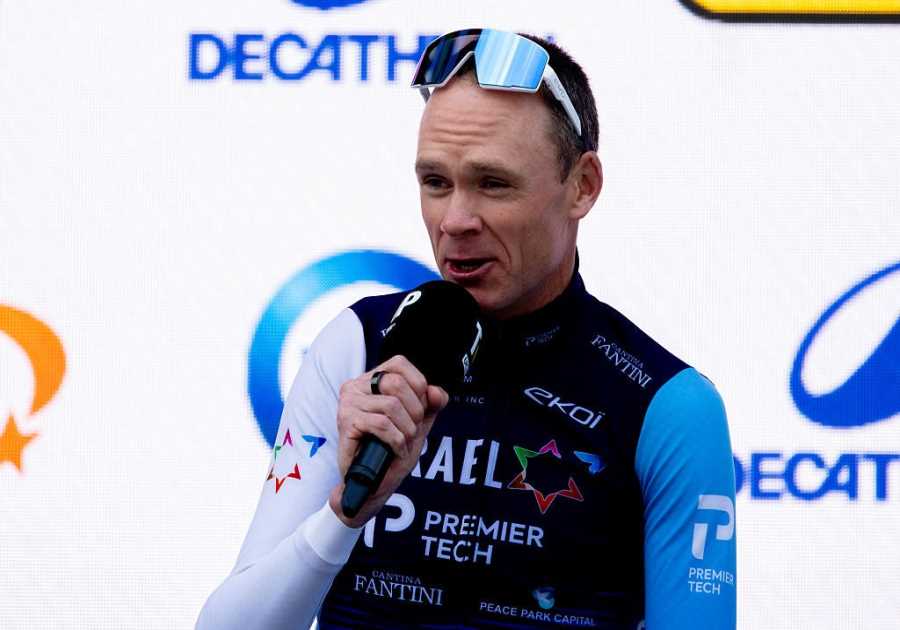HOSTED BY: https://fatmtnbike.com
TODAY'S RIDE

Masterstrokes and missteps: A closer look at 5 of our favorite finales of the year
As we close the door on 2021, we’ve been looking back on some of our favorite races of the season and reflecting on the tactics that won them. Tactical battles are, after all, a big part of what makes the best races so riveting, and 2021 gave cycling fans some great ones.
Temporary alliances, competing motivations, and team vs. team battles are so often present in the best of races, and picking apart those complexities takes the joy of cycling fandom, and sports fandom generally, to another level. To borrow some American football terminology, who doesn’t love Monday morning quarterbacking? Breaking down the Xs and Os of this or that key play is an intriguing enough proposition to keep countless sports shows on the air, and the way we see it, cycling could use a bit of that too.
With that in mind, we (Amy Jones, Abby Mickey, and Dane Cash, that is) are bidding farewell to the season with a closer look at the tactical masterstrokes and missteps that defined five of our favorite race finales of 2021.
Jasper Stuyven times his move to perfection – and gets some help – en route to a Milan-San Remo win
Jasper Stuyven’s first career Monument victory at Milan-San Remo in March was happy union of tactical acumen, strength, and fantastic fortune for the Belgian, who read a tricky finale to perfection and put his big engine on display before benefiting from a massive assist from an unlikely ally.
For decades known as the Monument best suited to the sprinters, Milan-San Remo has frustrated their ambitions over and over again in recent years as solo riders or small groups have managed to sneak away in the final kilometers. That may seem a bit surprising considering the profile, with the final climbs of the Cipressa and the Poggio not having the most grueling gradients around, but with those ups and downs coming so close to the end of a very, very long race, the teams of would-be sprinters have tended to lose control of the pack, allowing attackers to get clear. This year, that attacker was Stuyven, and he timed his move with aplomb.
The pack made it up and over the Cipressa without anyone getting clear, and then attacks flew, as they always do, on the Poggio. Former winner Julian Alaphilippe struck, drawing out fellow pre-race favorites Wout van Aert and Mathieu van der Poel, but the trio could not get much of a gap on the front of the peloton. Instead, the big dig towards the end of the grueling race played a more attritional role, helping force splits further back down the pack. Stuyven was one of those who found themselves in a much reduced, lined-out group on the final descent.
As the riders neared the bottom of the descent, Stuyven may have realized that there were several teams represented in that lead group – but not many domestiques. Most notably, neither Van Aert nor an impressive Caleb Ewan had teammates around them. And while Stuyven’s own finish is nothing to sneeze at, besting Ewan and Van Aert in sprint would have been a tall order, and so he rolled the dice and attacked just as the road flattened out, gambling everything on a move just 2km from the finish.
Most of those behind looked at each other for the next few moments, which was all Stuyven needed to gain a gap. It wasn’t a big one, but Stuyven suddenly found himself with company as Søren Kragh Andersen seemed to have realized that he did not have much to lose in at least giving it a go. It made plenty of sense for Kragh Andersen, and at the same time, it’s hard to overstate just how perfectly this played into Stuyven’s own hands, whether he had expected to get that critical late boost or not.
As Kragh Andersen closed the distance with around a kilometer to go, Stuyven swung off and let the newcomer take over at the front. Again, it made at least some sense for Kragh Andersen to oblige. A potential second place was a far better result than Kragh Andersen could have hoped for in a sprint, and so, much to the detriment of the fast finishers in pursuit, he pulled.
Seconds behind, a hard-charging chase group had finally gotten somewhat organized, but just as Stuyven had played his initial attack perfectly, so too did he play the finale. With Ewan, Van Aert, and Co. closing in, Stuyven stayed behind Kragh Andersen until the last possible moment. Only with around 100 meters left before the finish – and with the chasers practically on top of him – did Stuyven finally surge into the wind, exploding past Kragh Andersen. Moments later, one big name after another overtook the Dane, but the Belgian out front held on.
–Dane Cash
Kasper Asgreen attacks (again) to win the E3 Saxo Bank Classic
As a deflated Etixx-QuickStep team could have told you after snatching defeat from the jaws of victory in a three-on-one Omloop Het Nieuwsblad finale against Ian Stannard in 2015, numbers don’t always win bike races. They sure do come in handy, however, when you also have a budding star and the tactical acumen to capitalize on the situation, as an elated Deceuninck-QuickStep team could have told you after the E3 Saxo Bank Classic earlier this year.
With a little more than 66km to go in the Flemish one-day, and having already attacked a few kilometers earlier, Kasper Asgreen shot off the front of the E3 peloton near the top of the Boigneberg climb. The move that would prove to be instrumental to the victory, even if it would be mopped up about an hour later.
The 26-year-old Dane, wearing the distinctive jersey he won at the Danish national championships in 2020, never built up all that big of gap, but behind him, pre-race favorites Mathieu van der Poel and Wout van Aert found themselves putting in big digs as groups formed and reformed in pursuit. Inside the last 40km, Asgreen had about half a minute up front as Van der Poel, Van Aert, and Oliver Naesen worked hard taking turns at the front of a chase group that conspicuously featured Asgreen’s teammates Zdenek Stybar and Florian Sénéchal. Yves Lampaert would also join the fun, albeit only briefly, as he would soon puncture. Nonetheless, with 25km to go, the so-called Wolfpack had one rider off the front of the race and two more in a small group some 20 seconds behind.
Van Aert put in a herculean dig on the Tiegemberg with 20km to go, but Van der Poel and Stybar then took big pulls that suddenly spat Van Aert out the back. When the chasers finally did close Asgreen down, it became a group of seven with nearly half of the participants riding for the same team. An even greater numerical advantage hadn’t stopped this team from losing races before, but the final 15 minutes of this year’s E3 saw the squad put on a master class in turning an advantage into a victory (and runner-up honors to boot).
From the moment he was reeled back in until there were just 5km to race, the television cameras captured Asgreen on the front exactly zero times. It made sense; he had just worn himself out in a long solo move, and no one was going to expect him to put in big turns. Then again, a less savvy rider might still have gotten involved in the paceline and at least pulled just a bit. Not Asgreen. He diligently hung at the back enjoying as much slipstream as possible.
What’s more, his teammates weren’t expending much energy either, and for that, Deceuninck-QuickStep deserves real credit. One need only watch the Ineos Grenadiers in recent years to see one example after another of a numerically superior team putting their riders on the front with little to gain for doing so. Instead of taking full control of the lead group, Stybar and Sénéchal just took normal turns, helping keep Van Aert in the rearview mirror. And thus, after Asgreen had spent some time recovering at the back, the Belgian squad had three reasonably fresh riders in a group of seven — three cards best played in the form of solo attacks that would force their rivals to chase. Asgreen himself obliged with a little under 5km to go with a move that seemed at first like an opening salvo in what would likely be a flurry of attacks.
Sitting at the front of the group at that moment, Van der Poel looked around instead of trying to follow. Dylan van Baarle came to the front to help for a matter of seconds before he too started looking around. That indecision alone may have given Asgreen enough of a gap to spring him to victory, but his win was sealed over the next kilometer.
With two riders in the group, AG2R Citroën represented the biggest threat to Deceuninck-QuickStep’s advantage, and Van Avermaet duly went to the front to set the pace. Before long, however, Naesen decided that the gap wasn’t coming down quickly enough and surged ahead and to the other side of the road, attempting to bridge. Stybar would not let Naesen’s move go unanswered. He jumped onto Naesen’s wheel with relative ease, and Van der Poel led the rest of the chasers in getting onto Stybar’s wheel. Naesen pulled off and Van Avermaet gave it another go, but Sénéchal was on him right away, quickly putting and end to that attempt too.
Over the final 3km, Sénéchal and Stybar policed the front to great effect, reacting immediately to any sign of danger. When a last big dig from Van der Poel with 2km to go was shut down within moments, it was clear: Kasper Asgreen was soloing to victory. He would ultimately win by 32 seconds. On top of that, Deceuninck-QuickStep would also secure second place as Van der Poel opened his sprint from a long ways out with Sénéchal sitting comfortably in his wheel before surging past him. The team with the most collective firepower had also proven capable of using it effectively to take another big result in an undeniably excellent Classics campaign. One week after his E3 win, Asgreen would go on to take a Monumental win at the Tour of Flanders.
-Dane Cash
Marianne Vos capitalizes on Trek-Segafredo’s miscalculations at Gent-Wevelgem
Heading into the 2021 edition of Gent-Wevelgem, Marianne Vos seemed like a great bet to take the win, but as the race headed into its finale, everything was up in the air on the Flemish pavé with Trek-Segafredo and SD Worx seemingly in prime position to fight for the win. Instead, it was Vos who stood atop the podium at the end of the day after all.
High winds and cobblestones may have seemed like the decisive factors in Gent-Wevelgem but a potentially over-excited Elisa Longo Borghini played a role in handing Vos her first WorldTour victory of the season. Longo Borghini won the WorldTour race the weekend before the Belgian one-day and was on flying form in the early season but miscalculated the finale into Ghent, allowing Vos to glide to victory with barely a watt wasted.
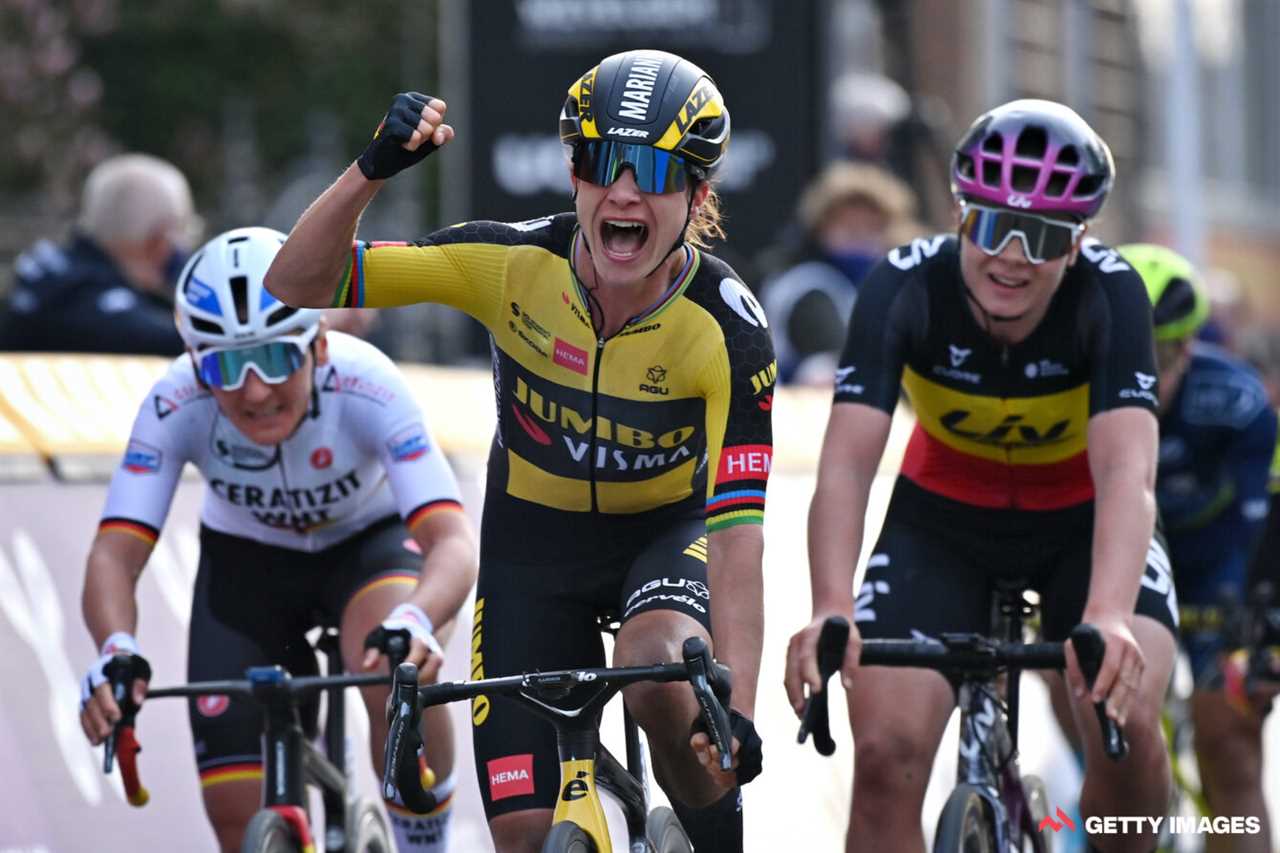
Rouleurs have found themselves at the front of the race in Wevelgem in the past, but recently the sprinters have claimed the early season Classic as their own. With their only sprinter out of the action early in the day Trek-Segafredo had no choice but to be aggressive. Longo Borghini was the main aggressor, attacking on two of the cobbled climbs midway through the race.
Her attacks proved fruitless at first, so the American team went down a different route. When the race turned into a strong crosswind, Longo Borghini was off the front again, this time with the help of her teammates Ellen van Dijk and Lizzie Deignan. The three Trek-Segafredo riders were joined by two SD Worx riders and a handful of others. Vos was not among them.
At this point the race could have been written off, with two of the biggest teams riding away and little cohesion behind – but then Longo Borghini put in a pull that shelled all but one of the riders in the group, Soraya Paladin. The decision left Deignan and Van Dijk to drift back to the chasing peloton, and suddenly, the front of the race was seriously lacking in numbers.
Even with the form she had in the early season, Longo Borghini couldn’t hold off Canyon-SRAM, Jumbo-Visma, and Valcar-Travel & Service working together without much support of her own, with Paladin hardly contributing. Vos, meanwhile, had faced the wind only once, in an early move after one of the climbs. From there on out, she let her rivals battle it out in the wind while she took shelter behind others. And so, with the help of her teammates and other enthusiastic teams, Vos rode safely to a sprint that had her name written all over it, with the pack catching the last two escapees in the final kilometer.
In the end, Vos duly delivered to take the victory. The race could have gone many different ways but after much breaking up and regrouping of the peloton, Vos won with her cool headedness and a little bit of luck.
-Abby Mickey
Primož Roglič leaves Brandon McNulty and Tadej Pogačar behind at the Itzulia Basque Country
The final stage of Izulia Basque Country was about as exciting as the final stage of a race can be, and although the final GC result was no huge surprise, the final day itself delivered plenty of intrigue to close out a fine race.
After winning three stages of Paris-Nice but finishing 15th overall after a crash, Primož Roglič wasted no time claiming the leaders jersey on the first stage in the Basque Country. He won the opening time trial, narrowly beating Brandon McNulty of UAE Team Emirates by two seconds. Roglič, however, ended up turning over the lead to McNulty on stage 4. Whether that was a matter of Roglič being overly keen on holding the leader’s jersey for the entire race we may never know, but it certainly spiced up the race finale.
On the final day of the six-day event, Roglic put on a show regaining the lead from the young American. The Slovenian star benefitted from being in the perfect place at the perfect time, some unlikely assistance from rival teams, and the safety net of Jonas Vingegaard.
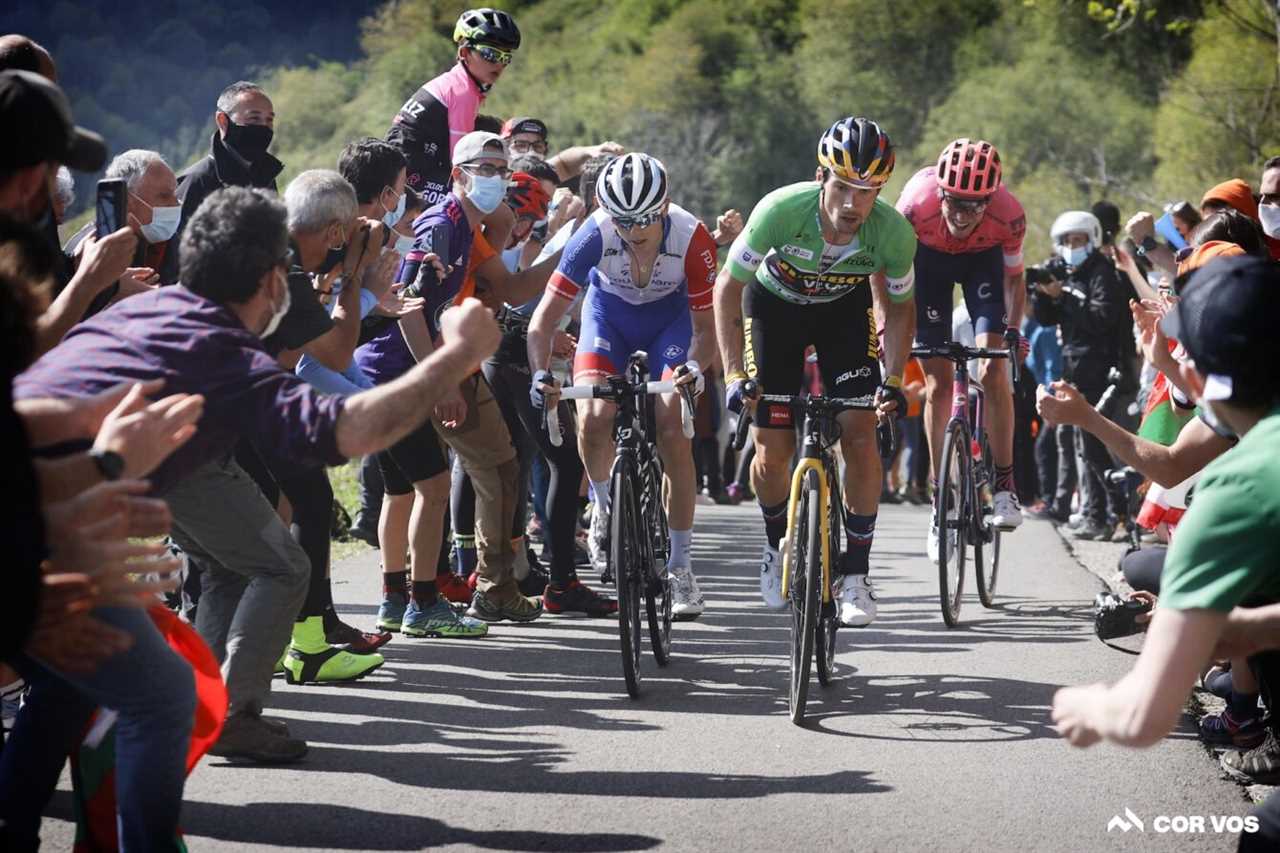
From the start, the day suited Roglic over McNulty, with seven climbs in total and a Cat 1 climb near the finish. The race was full gas from the gun and the speed also played into the Slovenian’s hands. Still, he would need to pick up 23 seconds on the race-leading McNulty while simultaneously holding off McNulty’s superstar teammate Tadej Pogačar, who started the day just 20 seconds behind Roglič.
Surprisingly, Roglic didn’t have to throw down an attack to get away from McNulty. Instead, he found himself tacked onto the back of a downhill move made by two Astana riders. Behind Roglic, McNulty was left with only Pogačar and Marc Hirschi to chase, with Roglic’s teammate Vingegaard also along for the ride. Sitting in third overall at the time, Vingegaard’s presence gave Roglič more cover to go all-in in the move, and unfortunately for McNulty, Roglic was also joined by two teammates up the road – two teammates who barely had to work due to the ambitions of Astana.
With 48km remaining, Roglic had already claimed the virtual lead with 15 seconds to spare while McNulty was barely hanging on to Pogačar’s wheel behind. By 35km Pogačar had abandoned McNulty to salvage the day for UAE, but the Tour de France champion still had over 45 seconds to hunt down and the race was closing in on the finish.
Even with such a big gap to close, Pogačar’s effort marked him as one of the strongest riders in the race. The mistake UAE Team Emirates had made was holding their star rider back to help McNulty and not allowing him to follow the original move made by Roglič earlier in the day. Having put all their eggs in the McNulty basket, Pogačar was left trying to close a huge gap when he did finally change tack and started riding for himself. It was made all the more difficult by the circumstances up the road.
Having benefitted from hard work from his own teammates and others to boot, Roglič then linked up with David Gaudu in a two-rider move. Behind, Pogačar was putting his Tour de France-winning engine on display pulling a group that would ultimately include Vingegaard, Alejandro Valverde, and Adam Yates – but the partnership up the road would prove to be a winning one.
Gaudu surged to the stage victory, and Roglič rolled over the line to secure a clear overall title. Jumbo-Visma would add to the spoils too as Vingegaard stayed ahead of Pogačar in the overall standings, taking runner-up honors with Pogačar settling for third. As for McNulty, he would finish nearly eight minutes back on the day, landing 17th overall.
-Abby Mickey
Lizzie Deignan holds on to win Paris-Roubaix
Before the inaugural Paris Roubaix Femmes, predicting who might win the race was a tricky feat. The women’s peloton had been racing cobbled Classics for years, but never had they faced conditions like The Hell of the North. The forecast of a wet edition for the first time since 2002 threw even more uncertainty into the mix – all eyes were on powerhouse riders who typically perform well on the flat and cobbled races. Not many had Trek-Segafredo’s Lizzie Deignan at the top of the list.
Within that team’s lineup, the race looked best suited to the physiology of Ellen van Dijk, who revealed in a pre-race press conference that she “almost started crying” after the first recon. After that initial run-in with the cobbles, Van Dijk said that she had less fear, but was still nervous about the race, particularly if it was to be a wet edition.
While her teammate approached the race with trepidation, Deignan embraced the potential for chaos on the wet and muddy cobbles. “I’m genuinely excited about this one,” she said. “I think it’s such a fight to get into those cobble sections so obviously it’s a little bit more dangerous than some other races. But you know there’s no huge climb that I’m scared about getting dropped on or whatever. It’s just going to be like such a fun race to be a part of.”
On the day, the early stages of the 116km race comprised three local laps of the start town of Denain. Live coverage had only just started as the peloton hit the first of the 17 cobbled sectors of the day – just 33km into the race – and Deignan was the first rider to go into the sector. By the end of it she was alone and the peloton behind was obliterated – leaving just 32 riders in the group.
Behind, the favourites slid and crashed their way through the sectors. Up front, Deignan’s lead steadily grew and she kept her composure, seemingly relishing the conditions. Only once did the 32-year-old appear close to losing control of her bike, her back wheel fishtailing over the mud-clicked cobbles, but she deftly corrected and continued on her way to victory.
In Deignan’s wake, the cobbles continued to wreak havoc on the reduced bunch with Movistar’s Emma Norsgaard, Longo Borghini, Christine Makerus, van Dijk, and newly-crowned world champion Elisa Balsamo all coming down in the mud. The group lost time and energy, but most of the riders regained composure and eventually formed a smaller bunch which also included Marianne Vos.
The carnage caused by the conditions meant that many riders were left isolated without teammates to help chase Deignan down. In addition, the Trek-Segafredo rider had three teammates in the remains of the peloton – Audrey Cordon-Ragot, Elisa Longo Borghini and Ellen van Dijk – to police the bunch and maintain her two minute advantage. What had seemed like a risky long-range strike by Deignan was increasingly looking like a race-winning move.
With around 17km to go, an isolated Marianne Vos attacked and went clear, but with Deignan’s gap still at around 2 minutes and the five-star Carrefour de l’Arbre sector remaining, it was too late. Behind her, Deignan’s teammate Longo Borghini was in pursuit and would eventually hold off the rest to take third, while Vos, although she managed to take around 45 seconds on Deignan, was never able to reduce the gap to less than one minute.
By breaking clear on her own, Deignan was able to use her considerable skill on the wet and muddy cobbled sectors and, unlike the others, was able to navigate them without being at the mercy of riders slipping and sliding around in front of her. She may not have been the pre-race favourite or even her team’s first choice of leader, but Deignan was the rider with the skill and the strength to master the cobbles and make history.
The image of a solo Deignan riding into the iconic Roubaix Velodrome, blood-stained hands raised aloft, will endure as a seminal moment in the new era of women’s cycling. An historic effort on an historic day by one of the women’s peloton’s classiest riders – followed by a well-deserved post-race shower.
-Amy Jones
Read MoreBy: Dane Cash
Title: Masterstrokes and missteps: A closer look at 5 of our favorite finales of the year
Sourced From: cyclingtips.com/2021/12/masterstrokes-and-missteps-a-closer-look-at-5-of-our-favorite-finales-of-the-year/
Published Date: Fri, 31 Dec 2021 01:54:34 +0000
___________________
Did you miss our previous article...
https://fatmtnbike.com/bike-adventures/the-hill-climb-project


